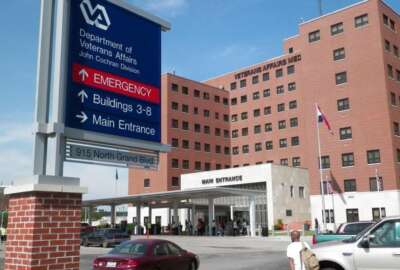
New VA appeals transparency tool part of focus on veterans’ experience to build trust
The VA just launched a new online tool called the appeals status tracker that will allow veterans with a disability compensation appeal to track what stage of the...
Veterans struggling through the Veterans Affairs Administration’s claims appeals process will soon have one less reason for frustration. The VA just launched a new online tool called the appeals status tracker that will allow veterans with a disability compensation appeal to track what stage of the process their appeal is in.
VA’s acting Chief Information Officer Scott Blackburn said on Agency in Focus – Veterans Affairs this is part of a push toward transparency that will hopefully improve the veteran experience.
“Rather than seeing that your appeal is ‘in progress’ for multiple years, which can be incredibly frustrating, [veterans are] actually seeing where it is in the queue. And having more information on who has it, what they’re doing with it, so that veterans understand that we’re building trust with them,” he told Federal News Radio’s Jason Miller.
And efforts to build trust with veterans seem to have been working. In an end of year message for 2017, VA Secretary David Shulkin said trust in the VA has risen from 46 percent in 2014 to 70 percent.
“We’re also focusing on the other angle, which is the veteran angle, which is the human-centered design,” Blackburn said. “Understanding what veterans like myself go through when they’re interacting with the VA, and making it easier. Making it easier to access appointments, making it quicker to file claims, and quicker to get appeals.”
Toward that end, the appeals status tracker was designed with input from veterans. It soft-launched March 20 on Vets.gov. It allows veterans to see past and current appeals issues, creates deadline alerts, see what’s coming next in the appeals process, and how long it should take to get to those points.
This is part of a thus-far successful push from VA to modernize its IT systems. As part of its year-end review, the VA Office of Inspector General praised improvements in cybersecurity at the agency.
VA has also begun its migration to the cloud, using both commercial and private options like Amazon Web Services and Microsoft Azure. This has allowed them to accelerate the closing of data centers.
“Our starting point was something like 395 data centers. Which was just absolutely insane,” Blackburn said. “I think we’re down to about 363 now. We closed 24 in fiscal 2017. We’re on track to close 68 in 2018. Our end goal is 44 data centers, 42 specialty data centers that are basically things that are required, like our consolidated mail-order pharmacy that need their own servers and their own data center. And then each individual hospital will have their own computer room, essentially, for patient safety and quality reasons. It’s an aggressive plan. Our plan is to get there — we will get there by fiscal 2020.”
Blackburn said moving this aggressively has required focus and prioritization. He’s been having tough conversations with VA’s various components about which issues to focus on and deliver solutions to. For example, with the Veterans Health Administration, they landed on 18 priorities for 2018, including electronic health records, scheduling, and suicide prevention.
“One of the issues with VA … we try to do everything,” he said. “As a result of that, we tend to spread ourselves way too thin, and drop the ball on everything as a result of that. If you try to do everything, you end up doing nothing. So a big focus of mine has been focusing the organization. What are the things that are really going to move the needle and focusing on those things and resourcing them correctly. We only have a finite budget, we only have a finite number of resources, and that means we have to go make trade-offs.”
Copyright © 2025 Federal News Network. All rights reserved. This website is not intended for users located within the European Economic Area.
Daisy Thornton is Federal News Network’s digital managing editor. In addition to her editing responsibilities, she covers federal management, workforce and technology issues. She is also the commentary editor; email her your letters to the editor and pitches for contributed bylines.
Follow @dthorntonWFED





